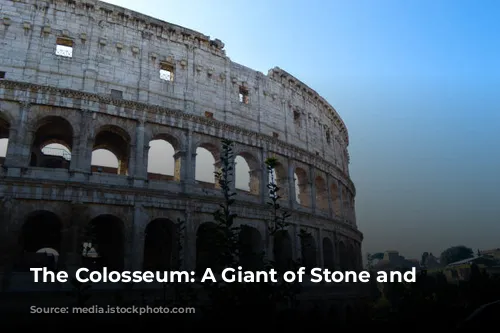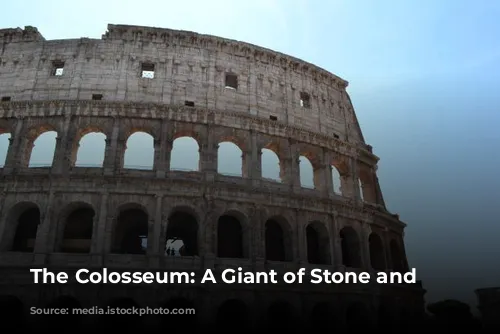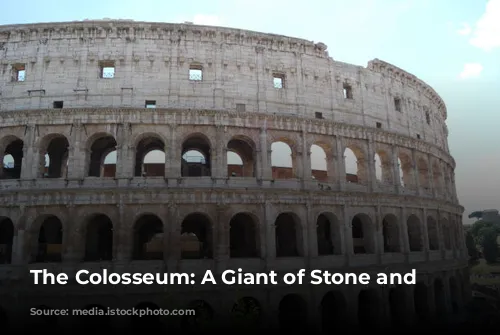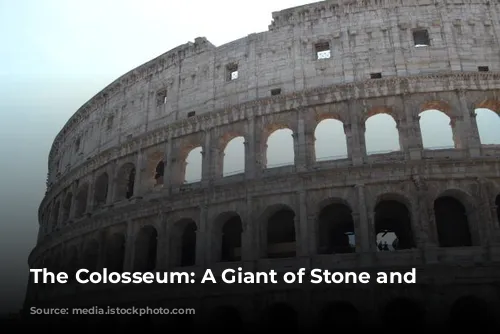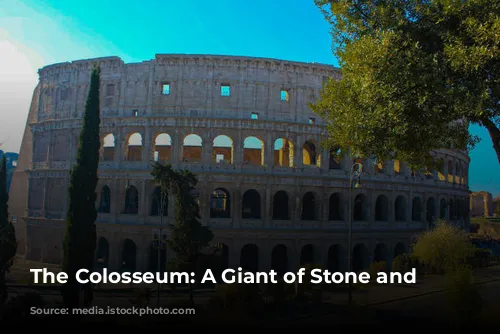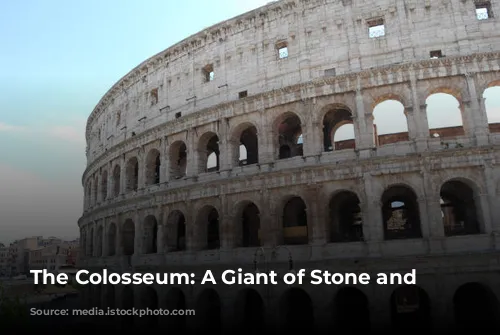The Colosseum, a name synonymous with ancient Rome, is more than just an amphitheatre. It’s a monument to the Roman Empire’s power, grandeur, and thirst for entertainment. Built by Emperor Vespasian of the Flavian family, it was inaugurated by his son Titus in 80 AD with a spectacular 100-day opening ceremony featuring gladiatorial contests, animal hunts, and even staged sea battles known as naumachiae.
The Colosseum’s Name: A Tale of Prophecy and Destruction
The Colosseum‘s name isn’t from the structure itself. It was coined centuries later by the Venerable Bede, a medieval monk, who prophesied: “Rome will exist as long as the Colosseum does; when the Colosseum falls so will Rome; when Rome falls so will the world.” The name likely stems from the massive statue of Emperor Nero, known as the “Colossus,” which stood nearby and has since vanished.
A Monument of Roman Engineering
The Colosseum is a testament to Roman architectural mastery. Built in just ten years, this elliptical structure boasts four levels, each with 80 arches. The lower levels were adorned with elaborate statues. The Romans’ architectural prowess is evident in their use of the arch, a key element in constructing buildings capable of bearing immense weight, as seen in Roman aqueducts. The Colosseum itself can be viewed as a series of aqueducts stacked atop one another.
A Marble Quarry for Popes
Today, we see only the skeleton of this once-mighty arena. During the Middle Ages, the Colosseum became a source of building materials for Popes who used its marble, lead, and iron to construct structures like the Barberini Palace, Piazza Venezia, and even St. Peter’s Basilica.
A Stage for Entertainment and Spectacles
The Colosseum was designed to hold up to 70,000 spectators, offering a breathtaking view of the arena from every seat. Seating was carefully arranged based on social status, with the commoners at the top and the elites closest to the action. Just like modern stadiums, the Colosseum featured a velarium, a massive linen canopy, which was moved by 100 sailors from the Imperial fleet to provide shade.
Secrets Beneath the Sand
Beneath the surface, a complex network of lifts and hoists allowed for dramatic entrances of gladiators and wild animals, creating thrilling surprises for the audience. Set designers also utilized these mechanisms to create elaborate backdrops for hunts and other events.
Gladiatorial Games: A Blood-Soaked Spectacle
The Colosseum was the stage for a variety of spectacles, from animal hunts to gladiatorial contests. These events offered a way for Romans to connect with their leader and escape the daily grind.
The gladiators, often prisoners of war or desperate individuals, were welcomed by fans as heroes. These men fought with different weapons and styles, adding variety and drama to the contests. The audience would cheer or boo, influencing the fate of the vanquished gladiator.
A Symbol of Roman Brutality
The Colosseum was a testament to the Romans’ love for violent entertainment. From the slaughter of animals to the bloody battles of gladiators, the Colosseum was a stage for spectacles that we would now consider barbaric. The smell of blood and burning flesh was a constant reminder of the savagery of the games.
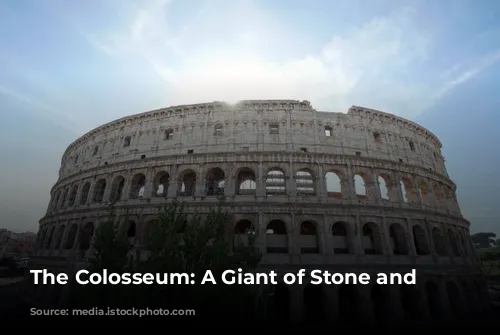
From Glory to Redemption
The Colosseum’s glory faded with the decline of the Roman Empire. Its walls housed hermits, hospitals, and even a cemetery. In the Middle Ages, the Colosseum became a source of building materials and almost met its demise. However, it was declared a sacred monument by Pope Benedict XIV, its walls transformed from a symbol of Roman cruelty into a symbol of Christian martyrdom. Today, the Colosseum stands as a powerful reminder of both the glory and the barbarity of the Roman Empire, captivating visitors from across the globe.
